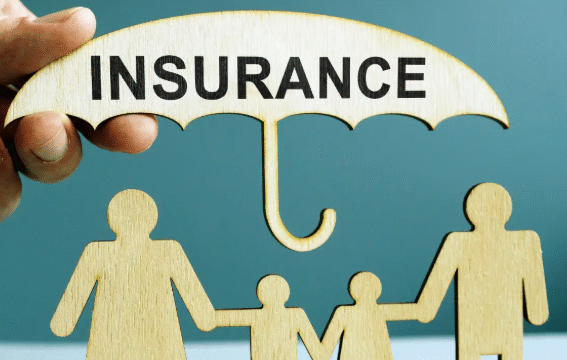Insurance is one of those topics that people often overlook until they truly need it. For many families, the word “insurance” sounds complicated, filled with terms that feel distant from daily life. But the reality is far different. Insurance is not just a financial product; it is a shield that protects the things that matter most—your loved ones, your home, your health, and your peace of mind. Imagine waking up tomorrow to an unexpected medical emergency, a car accident, or damage to your home. Without insurance, these events could cause not only emotional stress but also financial devastation. With the right coverage, however, families are able to recover, rebuild, and continue moving forward with their goals intact. This is why insurance matters more today than ever before, and understanding its role in both family life and financial stability is the first step toward true security.
At its core, insurance is a very simple idea. You agree to pay a small, predictable amount every month or year, called a premium, to an insurance provider. In return, the company promises to step in and help cover the costs if certain unexpected events occur. Instead of facing a massive bill alone, you share the financial risk with thousands of other policyholders. It is a system based on collective support—everyone contributes so that when someone experiences misfortune, they are not left carrying the burden by themselves. While no one can predict exactly when or how accidents, illnesses, or losses will strike, insurance ensures that these moments do not completely derail your finances or your family’s well-being.

For families, insurance plays multiple protective roles. One of the most immediate and vital is health insurance. Medical costs are among the biggest financial challenges worldwide. A single hospital stay, surgery, or long-term treatment can cost thousands, sometimes tens of thousands, of dollars. Health insurance makes these expenses manageable by covering doctor visits, hospital stays, medications, and even preventive services like vaccinations or annual checkups. Parents with health coverage know their children can see a doctor when needed without hesitation. Emergencies such as accidents or sudden illnesses no longer feel like financial disasters. Health insurance helps keep families healthier overall, since preventive care encourages early detection and treatment, which is always less expensive and more effective than waiting until conditions worsen.
Another important form of protection for families is life insurance. While no one likes to think about the loss of a loved one, the financial consequences of such a tragedy can be overwhelming. Life insurance provides a lump sum of money, called a death benefit, to the surviving family members. This money can cover essential costs like housing, food, education, or even debt repayment. For a family that depends on one or two incomes, life insurance is a way to ensure that those left behind are not forced to sell their home, interrupt their children’s education, or struggle just to cover basic expenses. It provides security for the future and peace of mind in the present. Many people consider it an act of love, since it represents care for family members even after one is gone.
Home insurance is another essential layer of family protection. A house is more than a building; it is a place where families grow, share memories, and feel safe. Yet homes are vulnerable to risks such as fire, theft, vandalism, storms, and other disasters. Home insurance ensures that when damage occurs, families can repair or rebuild without starting from zero financially. It also often covers belongings inside the house, from furniture to electronics, giving families reassurance that their possessions are safe. Even temporary living arrangements, like hotel stays during major repairs, are often covered. Without this kind of policy, one unfortunate event could wipe out years of savings and create stress that lingers for decades.
Then there is auto insurance, a must-have for anyone who drives. Cars bring convenience and independence, but accidents can happen anytime. Beyond the repair costs for vehicles, accidents may also involve medical expenses, property damage, or legal issues. Auto insurance covers these unexpected costs, ensuring that a family’s finances are not destroyed after a single mishap. For parents, it provides an extra sense of safety when young drivers in the household begin learning. For commuters, it removes the constant fear of “what if something happens on the road.” Most places require at least some form of auto insurance, but even if it weren’t mandatory, it would remain one of the smartest ways to protect both people and money.

The financial shield that insurance provides goes beyond these direct protections. One of its greatest benefits is preventing debt. Families without insurance often turn to credit cards, loans, or retirement savings when faced with emergencies. This creates a cycle of financial stress that can last for years. Insurance absorbs these sudden shocks, allowing families to avoid draining their savings or borrowing heavily. It also helps preserve long-term goals such as buying a home, funding children’s education, or saving for retirement. Instead of seeing these dreams crumble after a setback, insurance ensures that families can continue building toward them with confidence.
The value of insurance is not only financial but also emotional. Families with adequate coverage experience a sense of calm, knowing that they are not one unexpected event away from crisis. Parents can encourage their children to participate in sports or activities without the constant fear of medical costs. Homeowners can enjoy their property without worrying about every storm or accident. Life insurance brings comfort by assuring that loved ones will be financially supported in the future. These emotional benefits are as real as the financial ones, contributing to overall family happiness and stability.
There are many types of insurance beyond the common ones. Disability insurance, for example, protects income if someone becomes unable to work due to injury or illness. Travel insurance provides protection during trips, covering everything from lost luggage to medical emergencies abroad. Pet insurance helps with veterinary bills, which can be surprisingly expensive. Each family has different needs depending on their stage of life, financial situation, and lifestyle. A young family with children may focus more on health and life insurance, while an older couple may prioritize health and home coverage. The key is to evaluate what risks are most relevant and choose accordingly.
Real-life examples show how powerful insurance can be. Imagine a family where a parent suffers a sudden illness requiring surgery. Without health insurance, the bill could reach tens of thousands of dollars, forcing them to borrow or even declare bankruptcy. With coverage, they pay only a manageable portion, and life continues with less stress. Consider another family whose home is damaged by a fire. The repairs could cost more than they have saved, but home insurance pays for the damage and even covers temporary living arrangements. Or picture a car accident involving multiple people. The medical bills, car repairs, and possible legal fees could crush the family financially. Auto insurance ensures that all these costs are handled without ruining the household budget. Finally, imagine the loss of a breadwinner. Life insurance provides enough money for the surviving spouse and children to stay in their home, continue education, and live without immediate financial hardship. These stories highlight how insurance transforms unpredictable disasters into manageable challenges.

Choosing the right insurance requires attention and care. Families should start by assessing their needs. A young couple just starting out might prioritize affordable health and life insurance, while a family with a mortgage will want strong home protection. Comparing providers and plans is also crucial since coverage and costs can vary widely. It is important to read policies carefully to understand what is included, what is excluded, and how claims are processed. Life changes should also trigger updates to insurance. Marriage, the birth of a child, buying a home, or starting a new job are all reasons to review and adjust coverage. Insurance should grow with the family to remain effective.
There are also common misunderstandings about insurance. Some believe it is too expensive, but in truth, the cost of premiums is often far lower than the cost of facing a crisis uninsured. Others think they are too young to need coverage, but emergencies do not wait until later in life. Many people rely solely on savings, not realizing that a single emergency can wipe out years of careful planning. Another myth is that insurance companies do not pay, but in reality, most claims are paid as long as policies are understood and followed correctly. These misunderstandings often prevent families from getting the protection they need.
Looking at the bigger picture, insurance is about the long-term future. It allows families to live with confidence, knowing they are prepared for both everyday risks and major life events. Instead of worrying constantly about what might happen, they can focus on enjoying life, pursuing dreams, and building strong relationships. Insurance creates a foundation of stability, ensuring that love and care for family members extend beyond the uncertainties of life.
In conclusion, insurance is not just a piece of paper or a monthly bill. It is a promise of security and stability. It means that children can receive medical care without hesitation, that a spouse can remain in the family home after a loss, that possessions and memories are protected, and that long-term financial goals are safe. Insurance is ultimately an expression of love and responsibility. By embracing it, families protect not only their wallets but also their emotional well-being, their stability, and their future together. It is one of the most practical and caring decisions any family can make.



